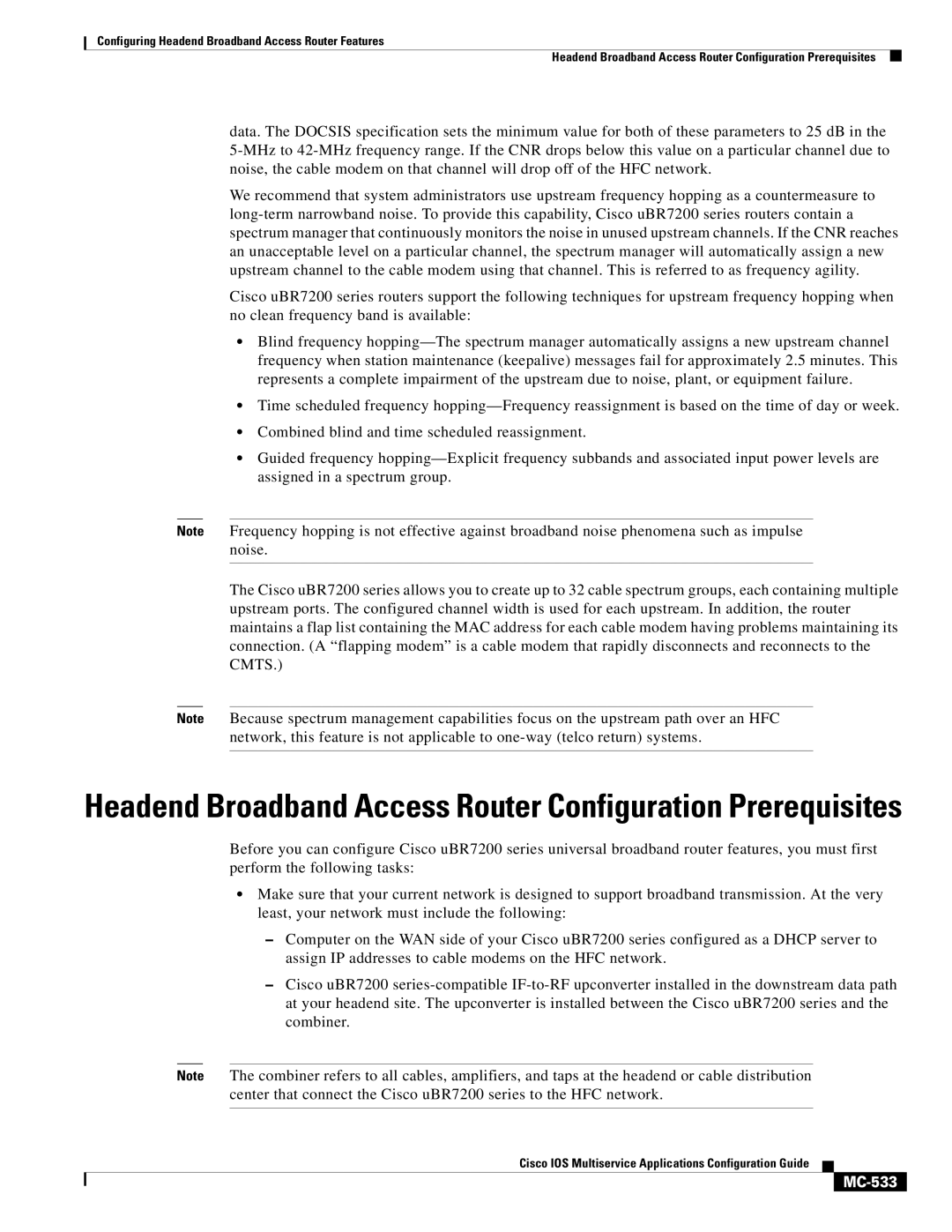
Configuring Headend Broadband Access Router Features
Headend Broadband Access Router Configuration Prerequisites
data. The DOCSIS specification sets the minimum value for both of these parameters to 25 dB in the
We recommend that system administrators use upstream frequency hopping as a countermeasure to
Cisco uBR7200 series routers support the following techniques for upstream frequency hopping when no clean frequency band is available:
•Blind frequency
•Time scheduled frequency
•Combined blind and time scheduled reassignment.
•Guided frequency
Note Frequency hopping is not effective against broadband noise phenomena such as impulse noise.
The Cisco uBR7200 series allows you to create up to 32 cable spectrum groups, each containing multiple upstream ports. The configured channel width is used for each upstream. In addition, the router maintains a flap list containing the MAC address for each cable modem having problems maintaining its connection. (A “flapping modem” is a cable modem that rapidly disconnects and reconnects to the CMTS.)
Note Because spectrum management capabilities focus on the upstream path over an HFC network, this feature is not applicable to
Headend Broadband Access Router Configuration Prerequisites
Before you can configure Cisco uBR7200 series universal broadband router features, you must first perform the following tasks:
•Make sure that your current network is designed to support broadband transmission. At the very least, your network must include the following:
–Computer on the WAN side of your Cisco uBR7200 series configured as a DHCP server to assign IP addresses to cable modems on the HFC network.
–Cisco uBR7200
Note The combiner refers to all cables, amplifiers, and taps at the headend or cable distribution center that connect the Cisco uBR7200 series to the HFC network.
Cisco IOS Multiservice Applications Configuration Guide
